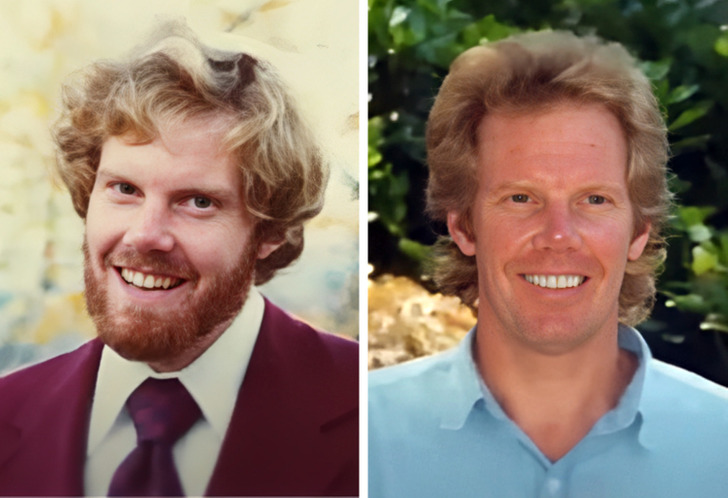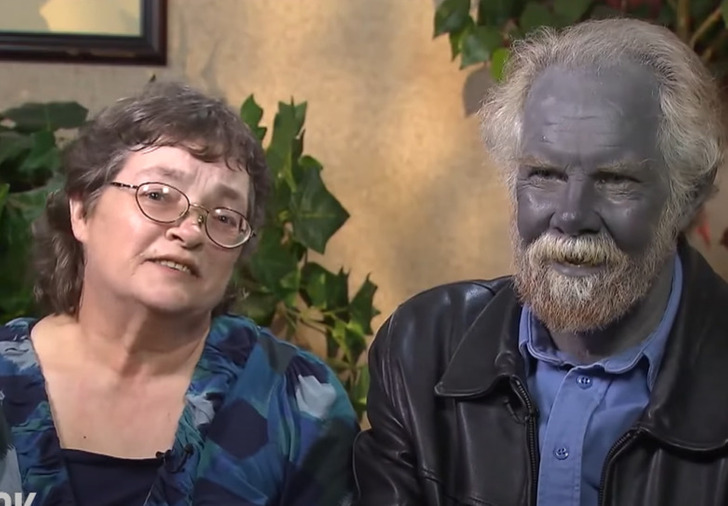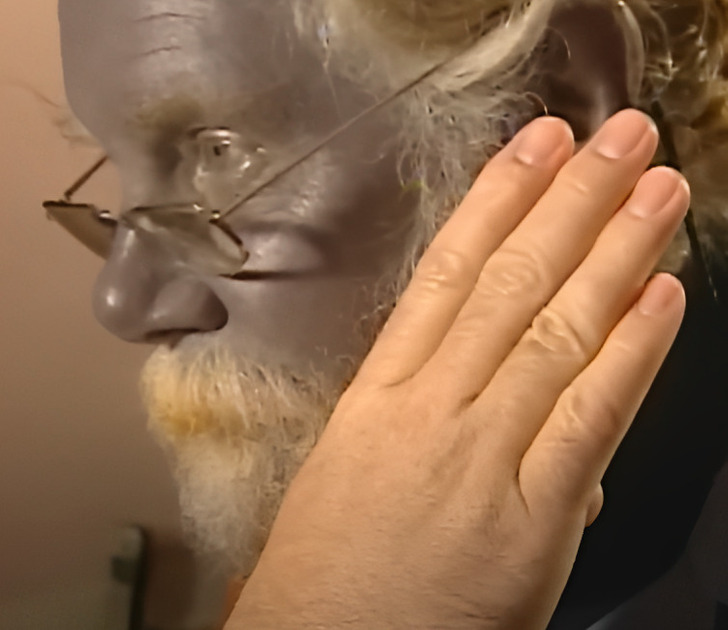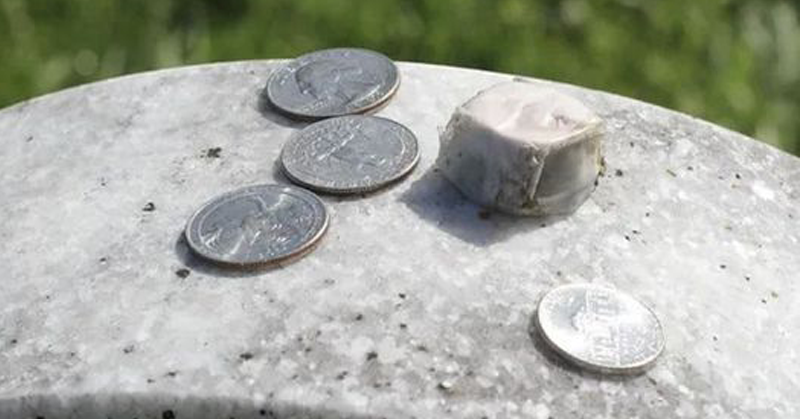The world’s most famous blue man, Paul Karason, also dubbed Papa Smurf, was born as a fair-skinned, freckled boy with ginger hair. In the 2000s, he became an internet sensation and made many TV appearances, openly talking about his condition. Let’s find out together why Karason turned blue and how he became a cautionary tale.

Paul Karason had a skin condition that made his skin flake, as well as acid reflux and arthritis. Doing his own research in order to improve these ailments, he found out about a solution of silver in water, also known as colloidal silver.
Colloidal silver was widely used as an antibiotic back before penicillin was invented in the 1930s. It was banned in 1999 in over-the-counter medications after scientists found that it can severely damage internal organs.

The late Paul Karason and his wife, Joanne
Karason drank what he believed was a miracle cure for over 10 years. Moreover, he even began to apply a silver preparation directly to his skin; he claimed his acid reflux and arthritis just went away. “I had arthritis in my shoulders so bad I couldn’t pull a T-shirt off. And the next thing I knew, it was just gone,” he shared.
Due to the silver accumulation in his skin, he started to turn blue and suffered from a permanent and rare condition called argyria. Only when Karason met an old friend who asked him, “What have you done to yourself?” did he begin to realize he’d become blue.

Karason claimed his blue skin had many advantages — he never got sunburns or had to wear sunglasses. There were some side effects he did not appreciate, however, such as folks “being less than polite” to him. Moreover, Karason confessed he couldn’t get a job because of employers’ resistance to hiring “people that are blue or that are noticeably different.”
Sadly, Paul Karason passed away in 2013 when he was 62 years old due to heart complications.
Papa Smurf’s story serves as a valuable lesson about the importance of being careful when it comes to at-home remedies. While it’s natural to want to find easy solutions to health problems, it’s important to be aware that such remedies can sometimes pose serious risks. It’s always better to consult a doctor and follow their advice for a safe and effective treatment.
Preview photo credit Inside Edition / YouTube
The Meaning Behind Placing Coins on Gravestones

Finding ways to celebrate a loved one’s memory becomes vital for many after they pass away, as losing a loved one is always a tough event. While flower arrangements and other tributes are typical, there is a specific meaning associated with laying pennies on gravestones, especially for veterans and service members and their families.

A Tradition Worth Keeping
Though its exact roots are unknown, some have speculated that the custom of laying coins on gravestones originated during the Roman Empire. However, according to Snopes, there is insufficient evidence to back up this assertion. However, one thing is certain: people who have a strong bond with military people are aware of the sacrifices they make and are looking for a significant way to remember their lost colleagues.
It became increasingly difficult for people to express their emotions honestly during the Vietnam War. It became customary to place a coin on a soldier’s tomb to signify that someone had paid them a visit without running the danger of awkward talks regarding the political sides of the conflict. The gesture was a straightforward but effective way for people to express respect and unity.
Symbolic Honor Representations
Every penny placed on a gravestone has a special meaning associated with it. Here are few instances:
A penny is a sign that someone has paid their respects and visited the tomb.
Deeper emotional significance can be derived from a nickel, which represents a bond between the individual who left it and the dead soldier from boot camp.
A dime signifies cooperation, even if it was just briefly before splitting up.
The most important coin, the quarter, acts as a monument by informing the bereaved family that the person who left the coin was there during their time of grief.
These coins remind us of the sacrifices made by those who serve in the military and act as tangible representations of respect and tribute, bridging the gap between the past and present.
Past Gravestones
Not all military traditions involve coins, such as placing money on gravestones. Military troops are big fans of challenge coins, which have no monetary worth but are extremely significant. These coins, which stand for oneness, are frequently traded as trophies of friendship and honor.
Throughout history, coins have also had a variety of roles in cultural practices. They have been regarded as representations of good fortune, giving, and even riches. While this isn’t always the case, some people in the past were buried with their riches. For instance, it’s been reported that two dollars and fifty cents were buried with Abraham Lincoln’s eyes covered.
The deeper significance of laying pennies on gravestones is to commemorate and recognize the extraordinary efforts made by those who are serving in the military and their families, even though there may not be a clear relationship between money and this practice. It serves as a reminder to ourselves that their sacrifices are priceless.




Leave a Reply